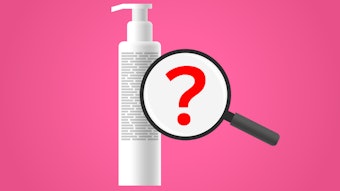
Read this article in its entirety in the July/August 2020 digital edition. . .
Walking down the beauty and personal care aisles of most retailers, one can’t help but notice that more and more products are touting the benefits of being natural, “clean” and pure. Brands have gone to great efforts and expenses to formulate products in a way that meets consumer demand for ingredients that live up to these qualities and claims. And, in return, they have been rewarded with strong sales and brand loyalty.
Unfortunately, some manufacturers have taken a different tact, choosing instead to skip reformulation and revert to marketing spin, thus merely giving the impression that a product is natural, “clean” or pure. This approach, often referred to as greenwashing, enables manufacturers to associate with and benefit from a green movement without truly investing in one, in hopes of their products enjoying the patina of social responsibility.
Greenwashing also assumes consumers are naïve and will not research or understand what is in a product or the impact those ingredients may have on the environment. According to the Shelton Group, a marketing firm focused on sustainability, rampant greenwashing prompted the U.S. Federal Trade Commission (FTC) to overhaul its approach to product claim monitoring in 2012 and to revise its Green Guides. As such, there is now specific language regarding claims the FTC considers to be misleading.
Millennial Wisdom
Move over boomers, millennials now represent the generational group with the greatest buying power. They grew up reading ingredient labels and demanding information and transparency—and they are now wise to deceptive marketing practices. As such, they often engage in a phenomenon referred to as the twist, i.e., pulling a product off a shelf, reading the front label, then turning the package around to study the product ingredients. In some cases, they will use their mobile phones to scan UPC codes to access more product details and to search customer reviews. But they are not just searching for ingredients they prefer; they are also looking for ingredients to avoid.
Of course, the average consumer is not a chemist, and this is where third-party certification bodies help consumers understand what they’re buying. As savvy consumers, millennials appreciate that reputable third-party certifications validate legitimate claims and guard against greenwashing. Consequently, certifications influence their purchase decisions.
In another study conducted by The Shelton Group, “Under the Lens: Claiming Green. The Influence of Green Product Claims on Purchase Intent and Brand Perception,” 56% of respondents claimed they believe that certifications make products more reputable. When asked directly whether they would pay up to 10% more for a product with third-party certifications, 58% of respondents said “yes.”
This study also revealed that in the personal care space, claims explicitly related to natural, organic and bio-based content had the most influence (44% of respondents); claims related to chemicals and toxins ranked second (42% of respondents). These claims far outpaced those promoting general environmental benefits (24%), recycled packaging content (15%) and waste reduction (8%). Furthermore, the top four certifications influencing buying decisions included:
- CCIC Leaping Bunny Not Animal Tested (27%);
- USDA Organic (22%);
- Natural Products Association Certified (20%); and
- USDA Certified Biobased Product (18%).
USDA-certified Bio-based
The BioPreferred Program, managed by the U.S. Department of Agriculture (USDA), was created by statute in the 2002 Farm Bill—federal legislation that shapes federal food and agricultural policy. The 2008 Farm Bill directed the USDA to develop a voluntary certification and labeling program for bio-based products to spur economic development, create new jobs and provide new markets for farm commodities.
The program’s goal is to increase the development, purchase and use of bio-based products through this initiative. It does so by establishing minimum bio-based content requirements for more than 100 product categories. In order to be certified, products must contain a least the minimum bio-based content percentage associated with its product category’s standards.
For cosmetic products specifically, eligible products must contain at least 25% bio-based content.1 To determine product compliance, third-party lab testing and verification for a product's bio-based content are administered through the program.
. . .Read more in the July/August 2020 digital edition. . .
References
- USDA BioPreferred website (accessed 2020, Jun 1). https://www.biopreferred.gov/BioPreferred/faces/Welcome.xhtml











